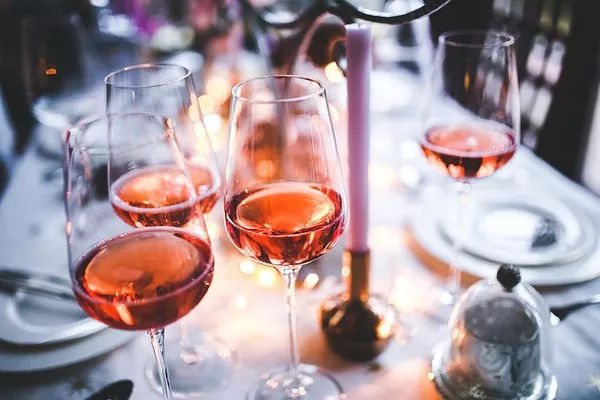Flowers have been used in culinary traditions around the world for centuries, adding both flavor and aesthetics to dishes. While not all flowers are safe to eat, many varieties are not only edible but also impart unique tastes and aromas to your meals. In this guide, we will delve into a selection of flowers you can eat, providing insights into their flavors, culinary uses, and safety considerations.
1. Nasturtiums (Tropaeolum majus)
Flavor: Nasturtium flowers offer a peppery, slightly spicy flavor reminiscent of arugula. The leaves and seeds are also edible and share this peppery taste.
Culinary Uses: Nasturtiums are versatile and can be used in salads, sandwiches, or as a garnish for various dishes. They add a delightful, zesty kick to your culinary creations.
Safety: Nasturtiums are safe to eat, but make sure they haven’t been treated with pesticides or other chemicals.
2. Calendula (Calendula officinalis)
Flavor: Calendula, also known as marigold, has a mildly tangy, slightly bitter flavor with subtle floral undertones.
Culinary Uses: Calendula petals can be used to brighten up salads, soups, and rice dishes. They are often used as a natural food coloring agent.
Safety: Calendula is generally safe for consumption but should be used in moderation due to its slightly bitter taste.
3. Lavender (Lavandula angustifolia)
Flavor: Lavender boasts a sweet, floral flavor with hints of mint and citrus.
Culinary Uses: Lavender is a versatile flower used in both sweet and savory dishes. It can be added to baked goods, syrups, herbal teas, and even as a spice for meat or vegetable dishes.
Safety: Use lavender sparingly, as its flavor can be overpowering. Ensure you’re using culinary lavender specifically cultivated for consumption, as some varieties may contain pesticides.
4. Rose (Rosa spp.)
Flavor: Roses offer a delicate floral flavor with subtle fruity undertones, which varies depending on the type of rose.
Culinary Uses: Rose petals can be used in desserts, jams, jellies, and beverages. They can also be candied for an elegant and fragrant decoration.
Safety: Ensure you use roses that have not been treated with chemicals. Organic or culinary roses are ideal for consumption.
5. Chive Blossoms (Allium schoenoprasum)
Flavor: Chive blossoms share the mild, oniony taste of chives but with a slightly milder flavor.
Culinary Uses: These blossoms are often used in salads, as a garnish for soups, or as a flavorful addition to cream cheese or butter spreads.
Safety: Chive blossoms are safe to eat, but it’s essential to ensure they haven’t been exposed to pesticides or other chemicals.
6. Violas (Viola spp.)
Flavor: Violas have a delicate, slightly sweet, and grassy flavor.
Culinary Uses: Violas are popular for their use in desserts, salads, and as a garnish for various dishes. They add a touch of color and elegance to your culinary creations.
Safety: Violas are generally safe to eat, but it’s crucial to avoid using flowers from plants that have been treated with chemicals.
7. Dandelions (Taraxacum officinale)
Flavor: Dandelion flowers have a sweet, honey-like flavor with slightly bitter undertones. The leaves are also edible and offer a more bitter taste.
Culinary Uses: Dandelion petals can be used to make tea, syrup, or salads. They can also be fried or used as a garnish for various dishes.
Safety: Ensure you collect dandelions from an area free of herbicides and pesticides. Avoid using mature flowers, as they can be bitter.
8. Pansies (Viola tricolor var. hortensis)
Flavor: Pansies have a mild, slightly grassy, and earthy flavor.
Culinary Uses: Pansies are used primarily for decoration in salads, desserts, and beverages. They are prized for their vibrant colors and delicate appearance.
Safety: Pansies are safe to eat but should be from sources free of chemicals.
9. Squash Blossoms (Cucurbita spp.)
Flavor: Squash blossoms offer a delicate, slightly sweet, and mildly earthy taste.
Culinary Uses: These blossoms are a delicacy often stuffed with cheese, herbs, or other fillings, then battered and fried. They can also be used in salads or as a garnish for soups.
Safety: Ensure the blossoms come from edible squash or zucchini varieties and haven’t been treated with chemicals.
10. Violets (Viola odorata)
Flavor: Violets have a subtly sweet, floral flavor with a hint of wintergreen.
Culinary Uses: Violets are used to garnish salads, desserts, and beverages. They can also be crystallized for an elegant touch.
Safety: Violets are safe to eat, but as with other edible flowers, avoid those treated with chemicals.
Safety Considerations When Eating Edible Flowers
When incorporating edible flowers into your culinary creations, there are some essential safety guidelines to follow:
Source: Ensure that the flowers you use are from reputable sources or your own garden. Avoid flowers from florists or areas treated with pesticides.
Identification: Be certain about the identity of the flower you plan to eat. Some look-alike flowers may be toxic.
Allergies: If you have allergies or sensitivities, exercise caution when trying new flowers. Start with small quantities to gauge your body’s reaction.
Preparation: Remove the bitter parts of flowers, such as the white base of the petals, stamens, and pistils, as they can have a bitter taste.
Moderation: Use edible flowers in moderation. While they can enhance the visual and flavor appeal of your dishes, excessive consumption may lead to an upset stomach.
In conclusion
exploring the world of edible flowers can add a delightful and creative dimension to your culinary endeavors. However, it’s essential to exercise caution, ensure you are using safe and edible varieties, and adhere to safety guidelines to fully enjoy the beauty and flavors that edible flowers can offer to your dishes.


